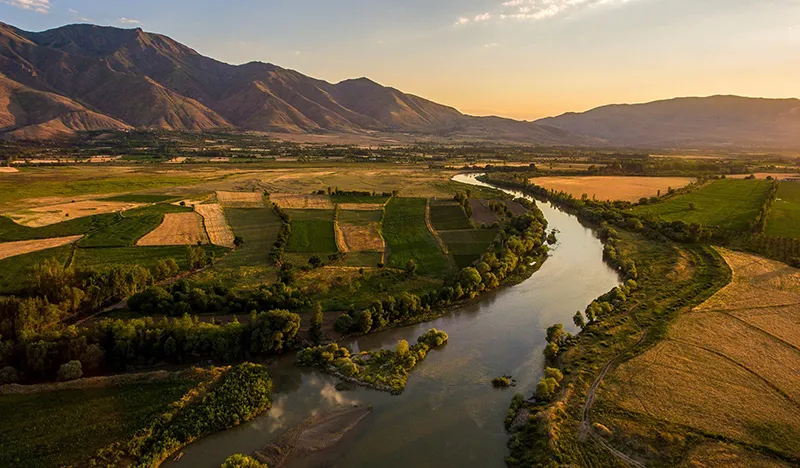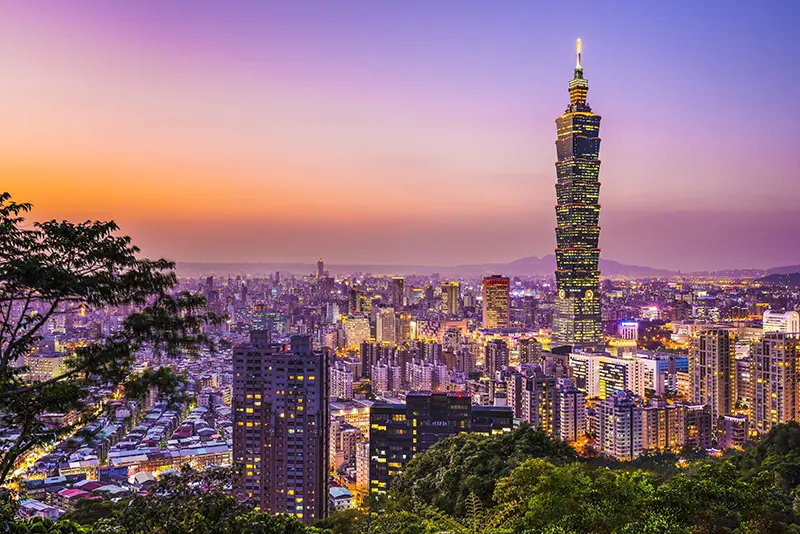The highest mountain system in the world
The Himalayas are the highest and most powerful mountain system on the entire globe. It is believed that tens of millions of years ago the rocks that make up the Himalayan Mountains formed the bottom of the ancient Tethyan Praocean. The peaks began to rise gradually above water as a result of the collision of the Indian tectonic plate with the Asian continent. The growth of the Himalayas took many millions of years, and no mountain system in the world can match them in the number of peaks – “seven-thousanders” and “eight-thousanders”.
History
Researchers who have studied the origin of this extraordinary mountain system in many respects, have concluded that the Himalayas were formed in several stages, according to which the areas of Shivalik (Pre-Himalayan), Lesser Himalayas and Greater Himalayas are distinguished. The Greater Himalayas were the first to break through the water surface, hypothetically about 38 million years old. After about 12 million years the gradual formation of the Lesser Himalayas began. Finally, relatively recently, “only” seven million years ago, the “younger” Shivalik Mountains were seen.
It is interesting that people were climbing the Himalayas even in ancient times. First of all, because these mountains have long been endowed with magical properties. According to ancient Buddhist and Hindu legends, many mythological beings lived here. In classical Hinduism, it is commonly believed that the Himalayas were once home to Shiva and his wife. Shiva is the god of creative destruction, one of the three most revered gods in Hinduism. While Shiva is a kind of reformer, in modern parlance, Buddha, who attained enlightenment (bodhi), is said to have been born in the southern foothills of the Himalayas.
As early as the 7th century, the first trade routes connecting China and India emerged in the rugged Himalayas. Some of these routes still play an important role in the trade of these two countries (these days, of course, we are not talking about multi-day hikes, but about road transport). In the 1930s, there was a plan to make transport links more convenient by building a railroad through the Himalayas, but the project was never implemented.
Nevertheless it was not until the 18th and 19th centuries that serious exploration of the Himalayan mountains began. The work was extremely difficult, and the results left much to be desired: for a long time topographers could neither determine the height of the main peaks, nor make accurate topographic maps. But the ordeal only fueled the interest and enthusiasm of European scientists and explorers.
In the middle of the 19th century, attempts began to conquer the highest peak in the world – Everest (Jomolungma). But the great mountain, rising 8,848 meters above the earth, could only give victory to the strongest. After countless unsuccessful expeditions, on May 29, 1953 man finally managed to reach the summit of Everest: The first climber to overcome the difficult route was the New Zealander Edmund Hillary, accompanied by Sherpa Norgay Tenzing.
The Himalayas are one of the centers of pilgrimage in the world, especially for followers of Buddhism and Hinduism. In most cases, sacred Himalayan sites have temples dedicated to the deities whose deeds are associated with a particular place. For example, a temple to the god Shiva is dedicated to Sri Kedarnath Mandir and in the south of the Himalayas, at the source of the river Jamuna, a temple was built in honor of the goddess Yamuna (Jamuna) in the 19th century.
Nature
Many people are drawn to the Himalayas by the diversity and uniqueness of their natural features. Except for the sullen and cold northern slopes, the Himalayan mountains are covered with dense forests. The vegetation is particularly rich in the southern part of the Himalayas, where the humidity level is extremely high and the average rainfall can reach 5,500 mm per year. Here, like layers of a pie, alternate zones of swampy jungles (the so-called theraj), tropical thickets, bands of evergreen and coniferous plants.
Many areas within the Himalayan Mountains are under state protection. One of the most important and at the same time the most difficult to pass – Sagarmatha National Park. On its territory is located Everest. In the western region of the Himalayas stretches the domain of Nanda Devi Reserve, which since 2005 includes the Valley of Flowers, a palette of natural colors and shades. Its vast meadows full of delicate alpine flowers preserve it. Among this splendor, far from human eyes, live rare species of predators, including snow leopards (no more than 7500 of these animals remain in the wild), Himalayan and brown bears.
Tourism
The Western Himalayas are known for Indian high-end mountain resorts (Shimla, Darjeeling, Shillong). Here, in an atmosphere of complete peace and solitude, you can not only enjoy the breathtaking mountain views and air, but also to play golf or go skiing (although most of the Himalayan trails are classified as “for experts”, on the western slopes there are also pistes for beginners).
In the Himalayas come not only lovers of nature and exoticism, but also seekers of real, unprogrammed adventures. Ever since the world became aware of the first-ever successful ascent of the slopes of Mount Everest, thousands of climbers of all ages and skill levels began to annually come to the Himalayas to test their strength and skills. Of course, not everyone reaches the cherished goal, some travelers pay for their courage with their lives. Even with an experienced guide and good equipment the journey to the top of Dzhomolungma can be a difficult experience: on some sections the temperature drops to -60º C and the speed of icy wind can reach 200 m/s. Those who dare to make such a difficult journey have to endure the vagaries of mountain weather and deprivation for more than one week: guests of Dzhomolungma have all chances to spend about two months in the mountains.
General Information
- The highest mountain system in the world. It is situated between Tibetan Plateau and Indo-Gangetic Plain.
- Countries: India, China, Nepal, Pakistan, Afghanistan and Bhutan.
- The largest cities: Kathmandu, Patan (Nepal), Lhasa (Tibet), Thimphu, Punakha (Bhutan), Srinagar (India).
- Major rivers: Indus, Brahmaputra, Ganges.
- Largest airport: Kathmandu International Airport.
- Length: more than 2,400 km.
- Width: 180-350 km.
- Area: about 650,000 km2.
- Average altitude: 6000 m.
- Highest point: Mount Everest (Jomolungma), 8848 m.
Economy
- Agriculture: tea and rice plantations, cultivation of maize, grains; animal husbandry.
- Services: tourism (mountaineering, climatic resorts).
- Minerals: gold, copper, chromite, sapphires.
Climate and weather
- Highly variable.
- Average summer temperature: in the east (in valleys) +35°C, in the west +18°C.
- Average winter temperature: to -28 ºС (above 5000-6000 m temperatures are negative all year round and may reach -60 ºС).
- Average precipitation: 1000-5500 mm.
Attractions
Kathmandu
- The temple complexes of Budanilkantha, Bodnath and Swayambunath.
- National Museum of Nepal
Lhasa
- Potala Palace
- Barkor Square
- Jokang Temple
- Drepung Monastery
Thimphu
- Bhutan Textile Museum
- Thimphu Chorten
- Tashicho Dzong
Himalayan temple complexes (including Sri Kedarnath Mandir, Yamunotri);
Buddhist stupas (memorial or reliquary structures);
Sagarmatha National Park (Everest);
Nanda Devi and Valley of Flowers National Parks.
Fun Facts
- About five or six centuries ago, a people called Sherpas migrated to the Himalayas. They know how to provide for themselves all the necessities of life in the highlands, but in addition, they are practically monopolists in the profession of guides. Because they are truly the best; the most knowledgeable and the most enduring.
- There are “originals” among the Everest conquerors. On May 25, 2008 the oldest climber in the history of mountaineering – a native of Nepal Min Bahadur Shirchan, who was 76 years old at that moment – climbed Everest. There were cases when the expeditions involved very young travelers The latest record was broken by Jordan Romero from California, who climbed in May 2010 at the age of thirteen (before that the youngest guest of Jomolungma was considered the fifteen-year-old Sherpa Tembu Tshery).
- The development of tourism is not good for the nature of the Himalayas: even here there is no escape from the garbage left behind by people. Moreover, the rivers originating here may be heavily polluted in the future. The main problem is that these rivers provide millions of people with drinking water.
- Shambhala is a mythical country in Tibet about which many ancient texts tell us. Followers of Buddha believe in its existence unconditionally. It fascinates the minds not only of fans of all kinds of secret knowledge, but also of serious scientists and philosophers. In particular, the most prominent Russian ethnologist L.N. Gumilev had no doubts about the reality of Shambhala. However, there is no incontrovertible evidence of its existence. Or they are irrevocably lost. For the sake of objectivity it should be said: many people believe that Shambhala is not located in the Himalayas. But in the very interest of people to the legends about it lies the proof that we all badly need the belief that somewhere there is a key to the evolution of mankind, held by the forces of light and wisdom. Even if that key is not a guide on how to become happy, but just an idea. Not yet discovered…




